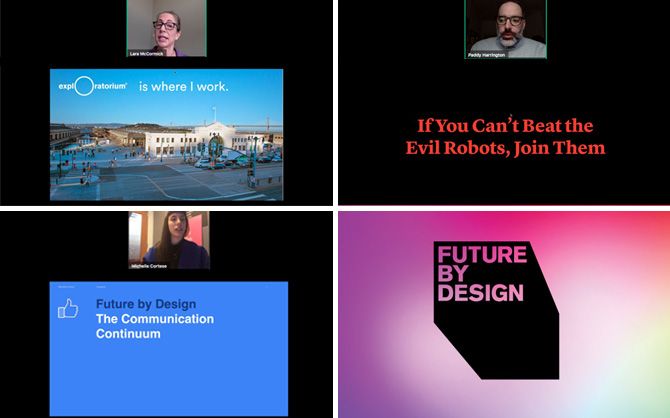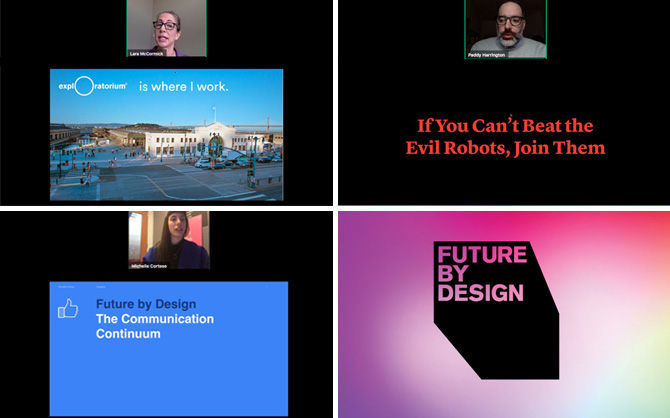Future by Design AI, Type and Inclusivity
May 23, 2018

Panelists discuss inclusivity, communication and how designers should respond to “evil robots” at RGD’s latest Future By Design discussion
THIS SECTION SPONSORED BY ![]()
On April 24, RGD invited creative industry leaders Lara McCormick, Michelle Cortese and Paddy Harrington RGD to share insights and predictions on what comes next for designers in the latest Future By Design panel discussion hosted by the Association of Registered Graphic Designers. Broadcast live to viewers across Canada, the event sparked important conversations about the impact of design, the changing nature of human communication, and how we can embrace advances in technology that may seem threatening at first, like artificial intelligence (aka “the evil robots”).

Lara McCormick, creative director at San Francisco’s Exploratorium museum, began the discussion with an overview of inclusivity and how designers can use their work to address it, providing examples from Exploratorium such as the use of authentic photos from the region’s diverse community, and the process of adding Spanish and Chinese languages to the museum’s wayfinding signage.
Michelle Cortese, VR product designer at Facebook, provided a breakdown of the history of communication design, how human interaction has evolved with changing audience sizes and how this affects the tools we use to communicate.
Presentations wrapped up with Paddy Harrington RGD, founder of Frontier, who shared examples of the different types of AI that exist online today and how they are currently (if sometimes ineffectively) using algorithms to create design work. He made the case for why designers should step up and take a more active role in the technology as it continues to advance.
Here are six takeaways from the event:
- “We have a responsibility as designers to be really thoughtful and make conscious choices in the work that we put out into the world.” - Lara McCormick
- “Storytelling is a deep human impulse, which stretches back a long time. We’ve done this by whatever means are accessible to us, progressing from the oral tradition of storytelling up to modern digital discourse—the Internet.” - Michelle Cortes
- “Today, AI is providing us with a means to an end, but doesn’t necessarily give us an answer. Control is ultimately still in the hands of the designer.” - Paddy Harrington RGD
- “Aim to include everyone. Do this by striving for an unbiased design process, redefining normal whenever possible—and forget asking for permission. Just do it.” - Lara McCormick
- “No media type exists in a vacuum. All communication formats are connected—they are part of the same story and have the same human impulses attached to them. Understanding this connection helps with design.” - Michelle Cortes
- “AI could go a number of directions. The question is what direction we want to take it. What is the role of the designer in that context? We can ignore it, we can try to stop it, or we can try to shape it.” - Paddy Harrington RGD
For more insights and conversation, follow the hashtag #rgdFBD on Twitter and Instagram. Recordings of the presentations are available for RGD Members in the Members Only section of the RGD website.
The Association of Registered Graphic Designers (RGD) promotes professional standards in the graphic design industry and authors a quarterly column on the Applied Arts website.







